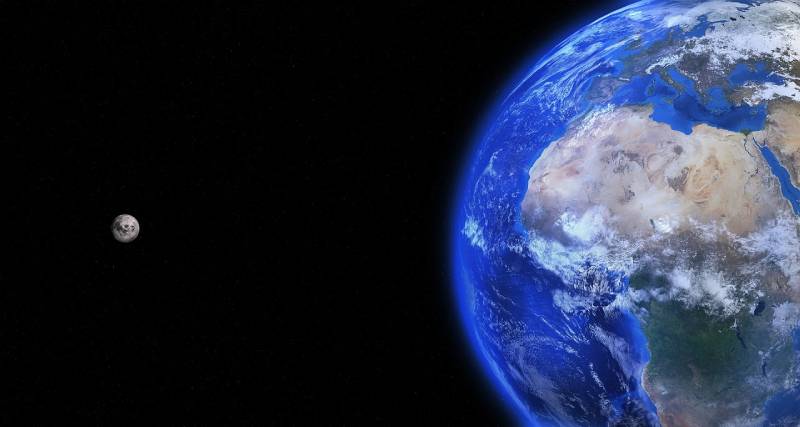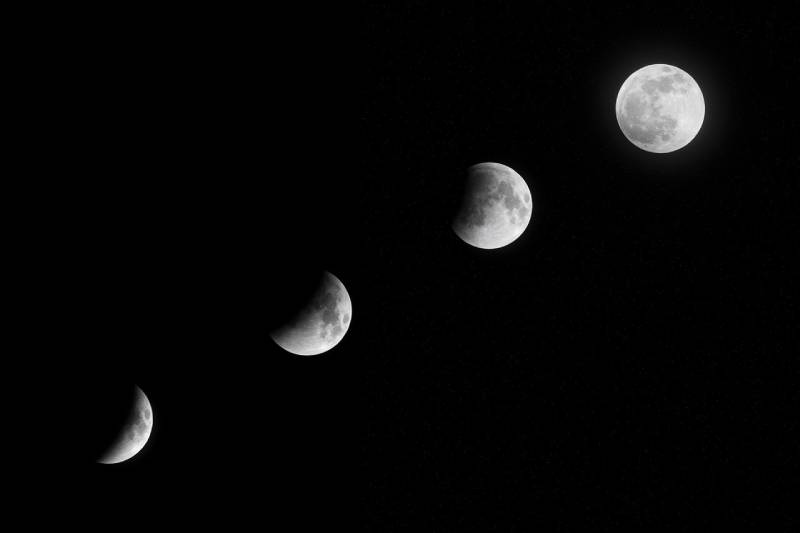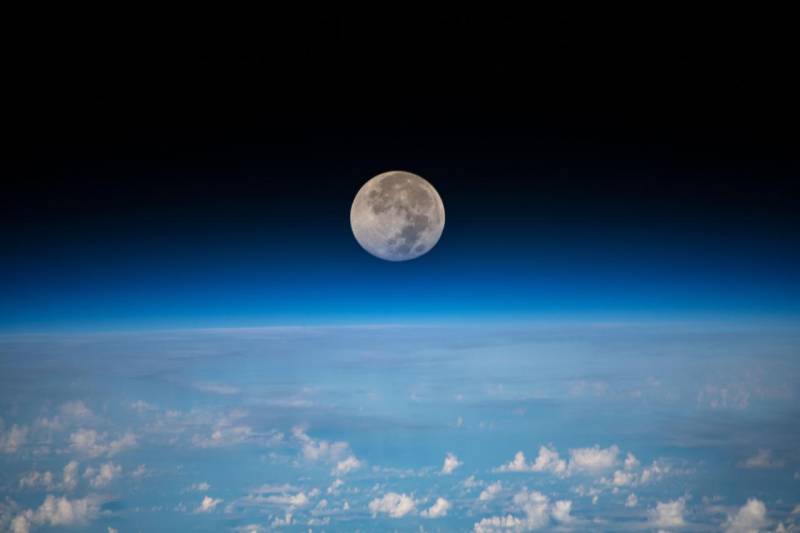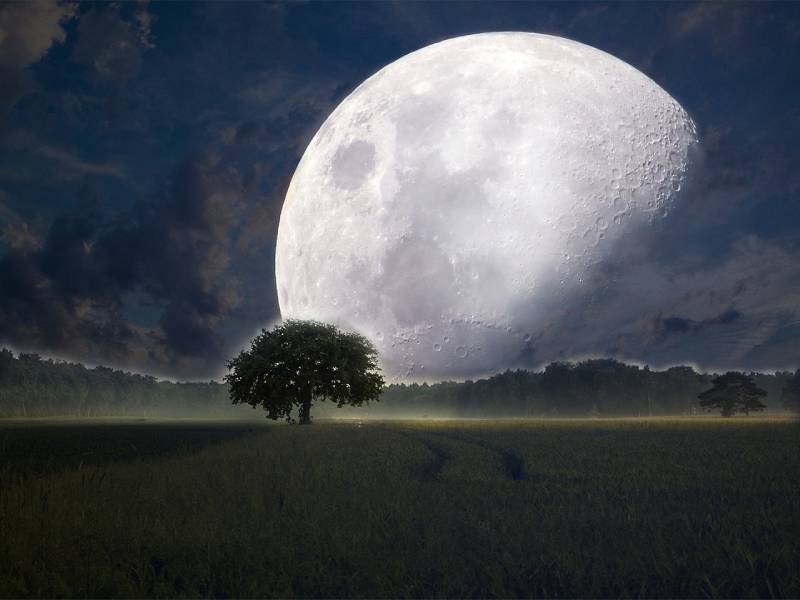The Moon is Earth’s only natural satellite. We have been studying the Moon longer than we have on record. Scientists continue to have unanswered questions about the Moon but one of the earliest questions was, “How big is the moon?” and “How many miles wide is the moon?” Thankfully, we have scientific technology that allowed us to learn that the Moon’s circumference is 6,783.5 miles and the diameter is 2,159.2 miles.
We have been mesmerized by the Moon and its alluring celestial presence. Researchers have sought to learn as much as they could about the Earth’s faithful companion. We know that the Moon is in perfect sync with us, and we know that the Moon affects our tides, but what else do we know?
Unraveling the Moon’s Size: What is the Size of the Moon?
Before scientific advancements, it was unclear whether or not the Moon was bigger or smaller than the Earth. So, is the Moon bigger than Earth?
Due to studious scientists and technology, we have learned that the Moon is much smaller than our Earth. The Moon is 27% the size of Earth.

Compared to other moons in our solar system (approximately 290), our Moon is the 5th largest. The largest is Jupiter’s Moon, Ganymede. It might not seem that impressive to have the 5th largest Moon, but considering that Earth is the smallest planet in our solar system, it really shows the large ratio between the Earth and the Moon (1:4). Meaning, the Moon is ¼ the size of Earth.
The Earth weighs a considerable amount more than the Moon. Simply put, the Earth weighs approximately 81 times the size of the Moon.
Beyond Earth’s Horizon: Exploring the Moon’s Size and Shifting Phases
The Moon’s size has been intriguing scientists for centuries. Its continuous change in perceived size has fascinated researchers and they asked questions for many years, including, “How big is the moon?”. The size of the Moon has been known since antiquity, thanks to the Greek astronomer Aristarchus of Samos (310 BCE — 230 BCE).
Aristarchus of Samos used trigonometry and the shadows of the Moon to come up with his estimation of the Moon’s size. And he ended up only being a little bit off!
The size of the Moon was officially determined in the 1950s with the development of the LIDAR. We still use the LIDAR to receive the measurements that we have today.
The Ever Changing Size of the Moon
The Moon is always changing in size – well, at least from a human’s perspective. Even though it may appear that the Moon is changing size, it is always consistently the same size. The Moon goes through phases due to its proximity to the Earth and the Sun.
The phases of the Moon:
● New Moon
● Waning Crescent
● Third Quarter
● Waning Gibbous
● Full Moon
● Waxing Gibbous
● First Quarter
● Waxing Crescent

Due to the orbital relationship between the sun and Earth, the Moon undergoes its phases. The Moon revolves around the Earth, which results in the lunar cycle. The lunar cycle takes about 29.5 days to complete (approximately a month), which is why we see different variations of the Moon throughout the month.
The Moon Illusion
The moon illusion is captivating. The Moon illusion gives the impression that it is continuously changing in size as it traverses the sky! The moon illusion is based upon two factors; an optical illusion of the horizon and the Earth’s atmosphere.
- Optical Illusion of the Horizon: When the Moon is close to the horizon, our brains compare the size of the Moon to the nearby objects and we perceive it to be larger. So, once it moves away from the horizon, we previous it to be smaller.
- Earth’s Atmosphere: The Earth’s atmosphere bends the lights, which makes the Earth appear larger when it is closer to the horizon.
The Mass & Its Effect on Gravity
Due to the small mass of the Moon, the gravitation pull is much weaker than Earth. Therefore, you will weigh much less on the Moon! If you were to weigh 100 pounds on Earth, you would be about 16 pounds on the Moon.
Since the gravitation pull on the Moon is much weaker, and you weigh less, you are able to jump way higher. In fact, you can jump about 6 times higher than that of Earth. If you can jump 3 feet on Earth, then you would be able to jump 18 feet on the Moon!
Tidal Forces: How the Moon Shapes Earth’s Tides
The Moon affects the tides on Earth. We have all probably learned this in elementary school. But, you may have had some concerns about how the Moon could possibly be the sole reason that the tides move the way that they do!

The Moon does have a weaker gravitation pull than the Earth, but the Moon is strong enough to manipulate the tides on our Earth. It draws the water sources creating ripples; depending on the proximity to the Moon, the Earth will experience high tides and low tides.
Essentially, the Moon pulls the water away from the Earth, but since the Earth has a much stronger gravitational pull, it pulls the water back down to the Earth.
How the Moon Developed Its Size
The most widely accepted theory about the formation of the Moon is the Theia. A Mars-sized planet named Theia was floating in space when it collided with baby Earth. Chunks from Earth and chunks from Theia broke off and started orbiting around young Earth.
Eventually, the pieces of debris from Earth and Theia formed together, creating a new celestial body. Once the pieces morphed together to create the Moon, it started orbiting around the Earth.
More years went by and the Moon and the Earth became in sync and now orbit around perfectly together.
This theory is backed up with evidence. When the Moon was explored further, researchers were able to find moon rock that matches the rock composition only found on Earth. How does the Earth’s rock get on the Moon’s surface? The theory clearly shows that the Moon’s surface was once on the Earth.
The Moon: A Neverending Mystery to Scientists
The more we learn about the Moon, the more we want to learn! We know so much about our natural satellite, but there are so many questions that have gone unanswered. NASA and other scientific institutions are planning more trips to the Moon to help us get more answers.
We know that the Moon is continuously changing due to its lunar cycle, but the size always stays the same. The size of the Moon is about ¼ the size of the Earth and one of the largest moons in our solar system. The Moon isn’t just a distant companion, it plays a direct role in our planet’s tides. Scientists will probably learn more about the relationship between the Moon and the Earth as they make more trips to the Moon.

